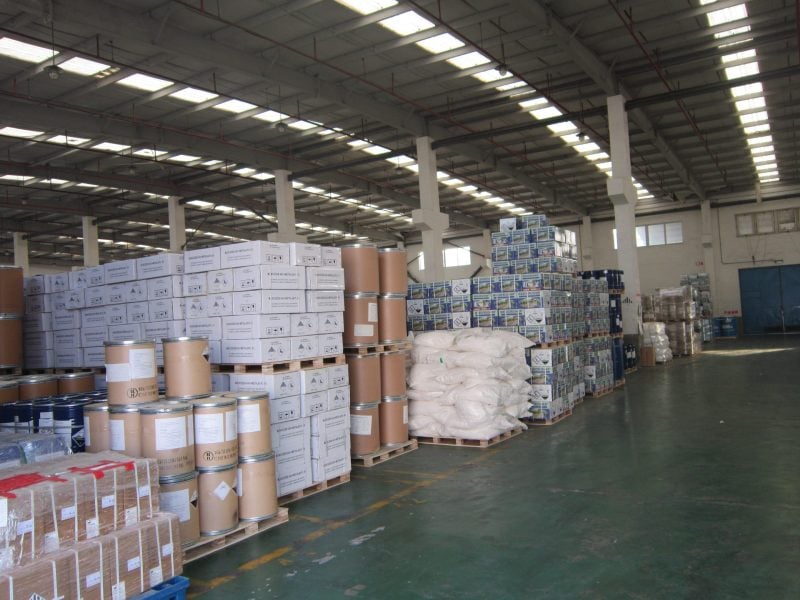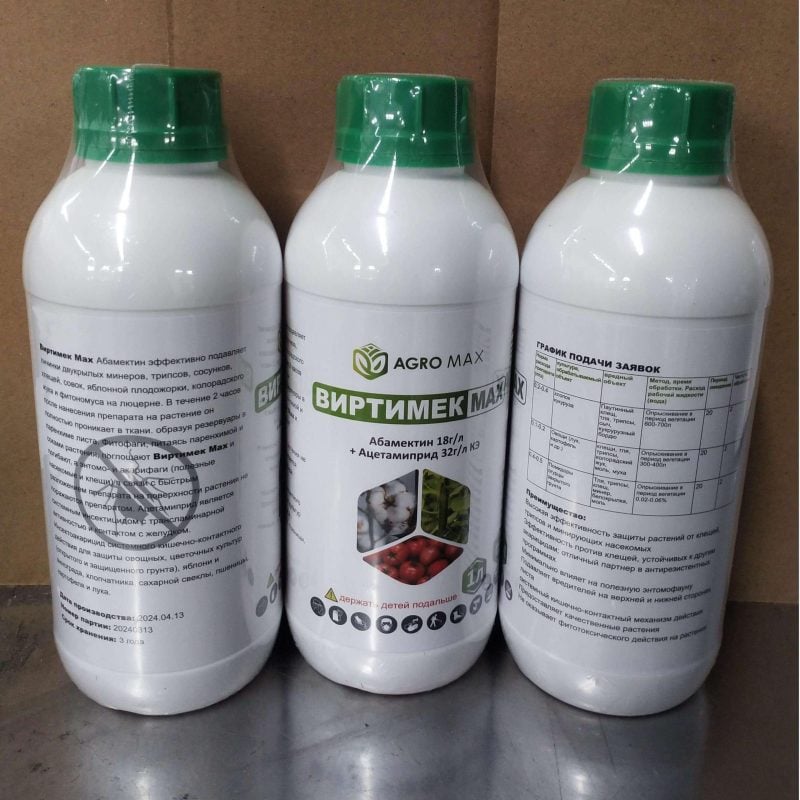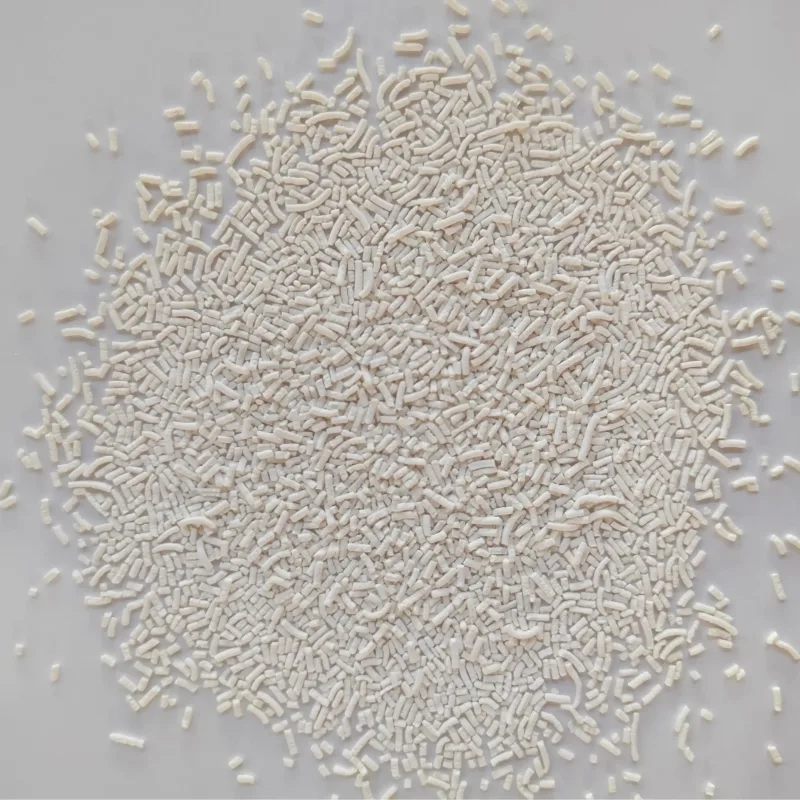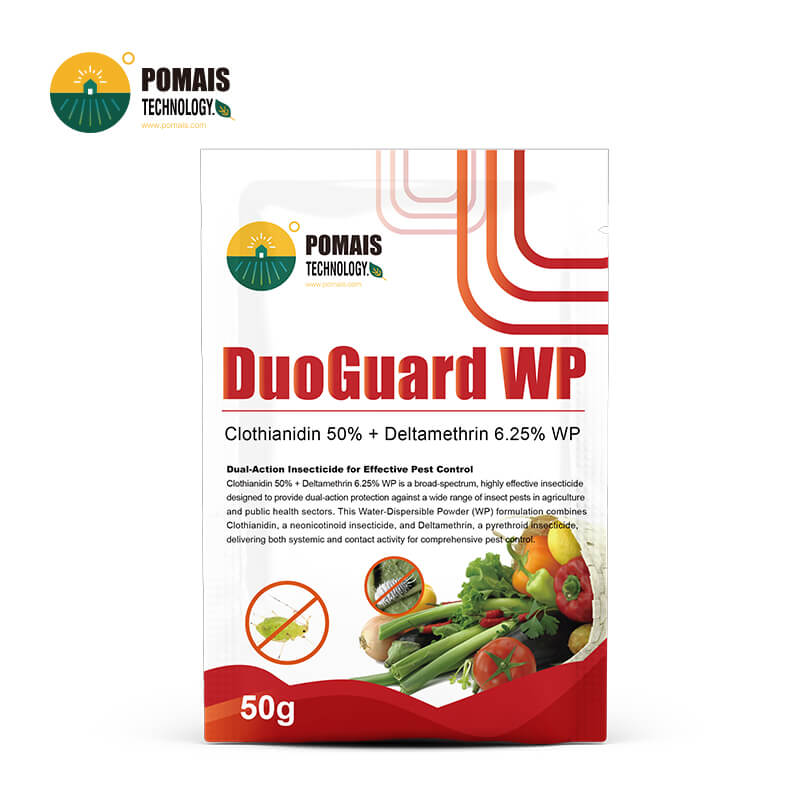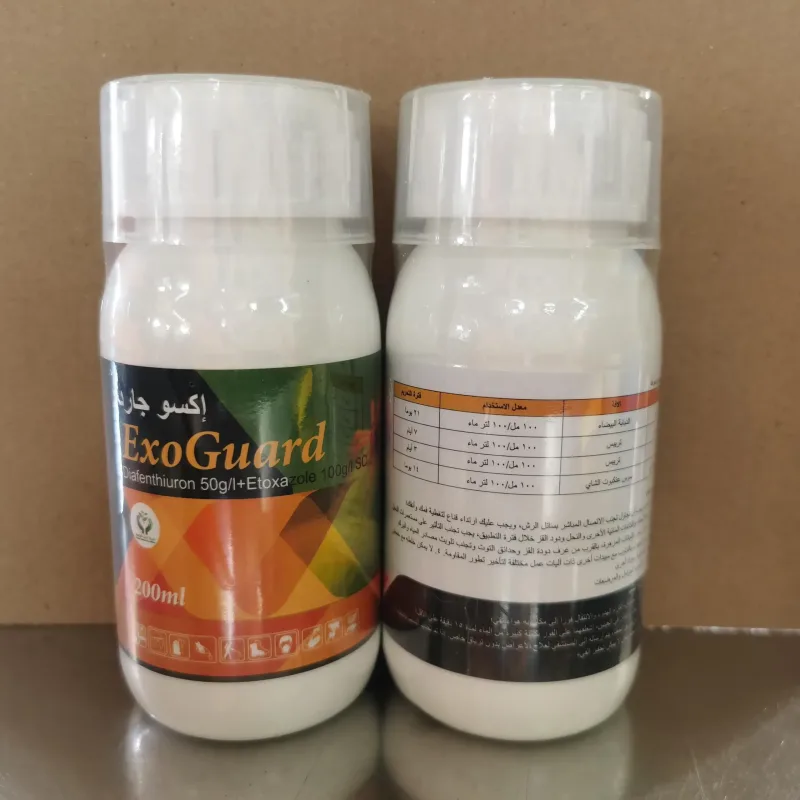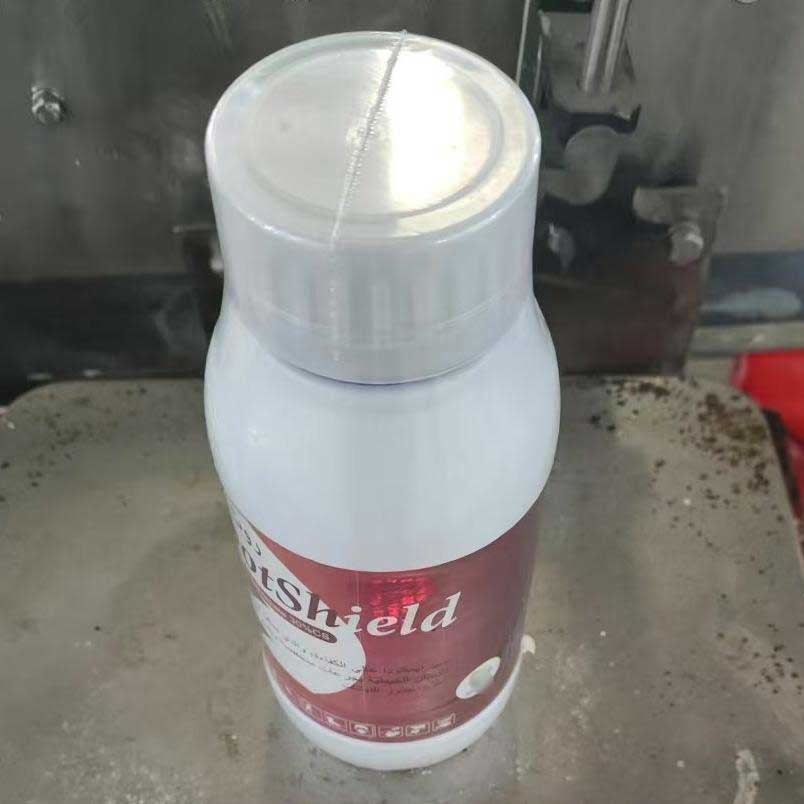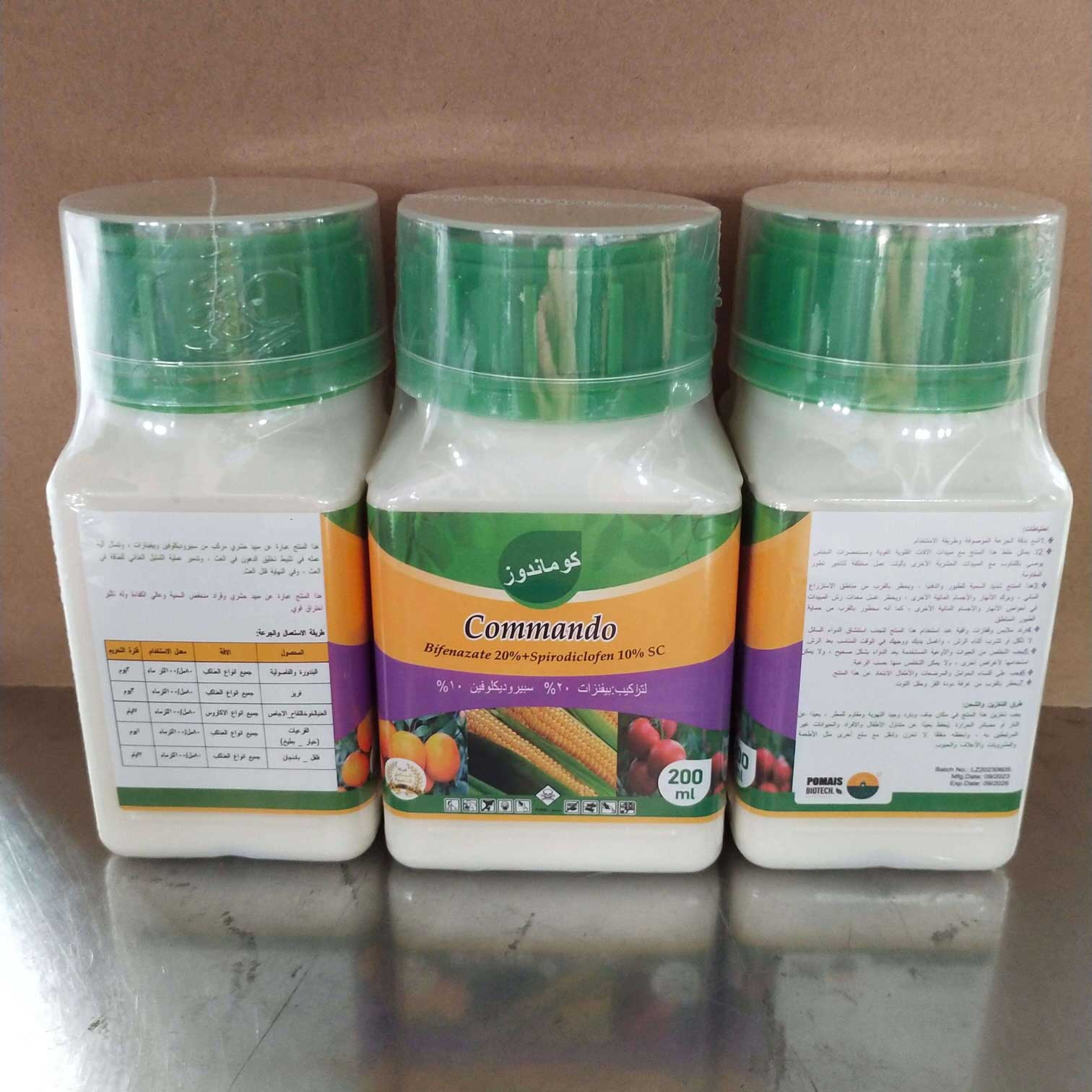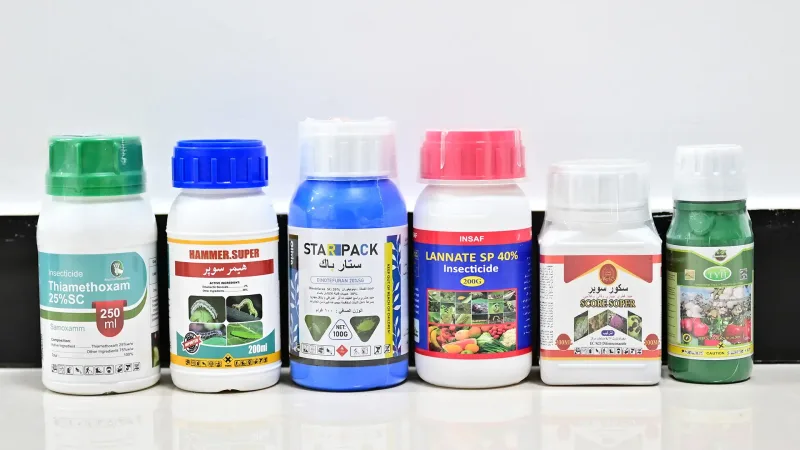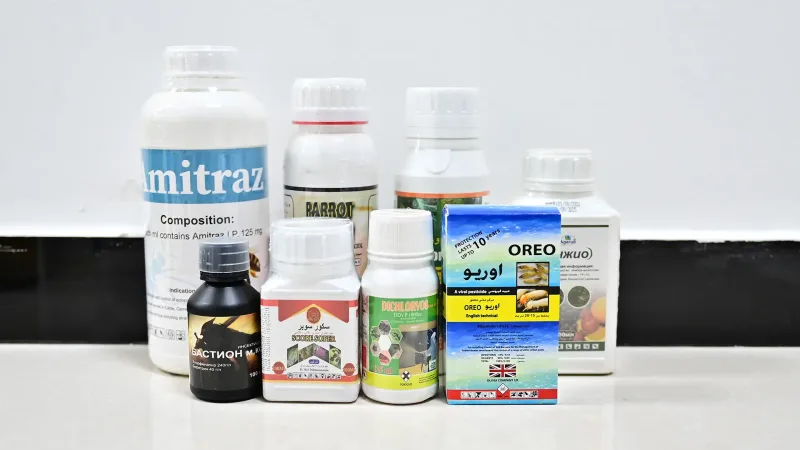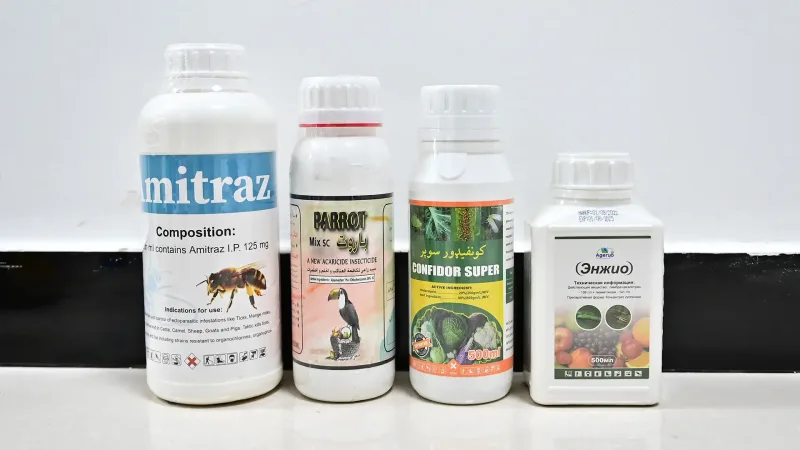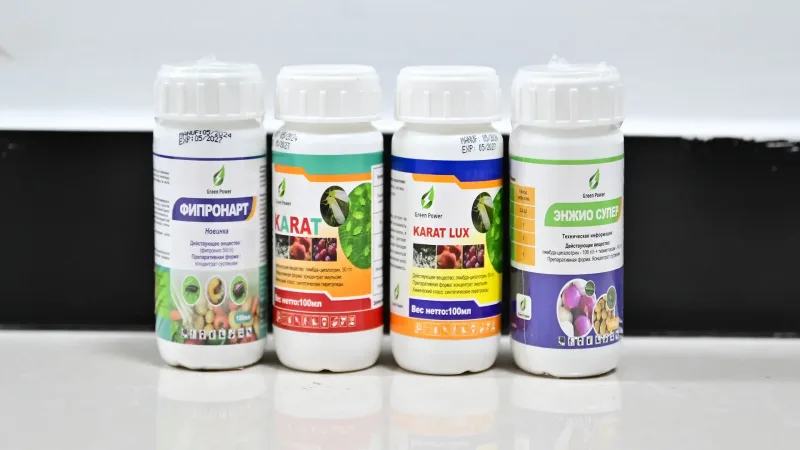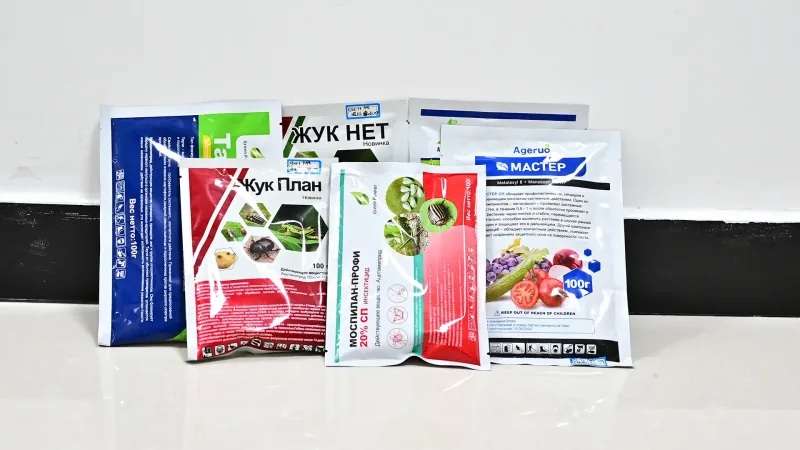Here’s a detailed description of the types of insecticides we offer at POMAIS, based on their mode of action, toxicology, source, and chemical structure. This information highlights how our insecticides are designed to effectively tackle various pests across agricultural and residential settings.
Insecticide Types Based on Mode of Action
1. Contact Insecticides
Contact insecticides kill pests upon direct contact, disrupting their nervous systems almost instantly. One of our key products in this category is DDVP (Dichlorvos) Insecticide. DDVP is highly effective against a wide range of pests, including flies, mosquitoes, and stored-product pests, making it ideal for both household and agricultural use.
2. Systemic Insecticides
Systemic insecticides are absorbed by plants, offering protection from the inside out. Our Imidacloprid products are well-suited for crops such as citrus, cotton, and vegetables, where they control sap-feeding insects like aphids and whiteflies. This long-lasting protection is especially valuable in managing persistent pest populations.
3. Stomach Insecticides
Stomach insecticides work through ingestion, making them particularly effective against pests that chew on crops. Spinosad serves as a versatile solution, targeting leaf-eating pests like caterpillars and beetles. Spinosad is a great choice for fruit and vegetable crops, as it acts both on contact and through ingestion.
Insecticide Toxicology: Types Based on Toxic Effects
1. Neurotoxic Insecticides
Neurotoxic insecticides interfere with the pest’s nervous system, causing paralysis and death. Chlorpyrifos is a powerful neurotoxic agent that controls a wide range of pests across different crops, including turf. It is highly effective for combating aphids, leafhoppers, and other pests that affect large-scale agricultural operations.
2. Insect Growth Regulators (IGRs)
IGRs are designed to disrupt the development and reproductive cycles of insects, targeting juvenile stages to prevent maturity and reproduction. Methoprene is a notable example in this category, particularly effective in environments like storage areas and livestock facilities, where long-term control of flies and fleas is essential.
Insecticides by Source and Chemical Composition
1. Synthetic Insecticides
Our range of synthetic insecticides is known for their potency and efficacy. Fipronil stands out as a versatile solution against termites, ants, and other challenging pests. It’s particularly valuable in both residential and agricultural settings for long-lasting pest control.
2. Biological and Botanical Insecticides
For those seeking natural alternatives, we offer products like Azadirachtin, derived from neem oil. This botanical insecticide is highly effective for organic farming and sustainable agriculture, providing control over aphids, thrips, and whiteflies while being gentle on beneficial insects.
Insecticides by Chemical Structure
1. Organophosphates
These insecticides are known for their strong neurotoxic effects and are commonly used to manage pests quickly. Dichlorvos (DDVP) is a powerful organophosphate that works immediately upon contact, making it ideal for use in both agricultural and residential pest control.
2. Neonicotinoids
As systemic insecticides, neonicotinoids provide prolonged protection against sap-feeding pests. Imidacloprid is a prominent choice for crops like soybeans, citrus, and cotton. It offers systemic control, which makes it particularly effective in managing aphids, whiteflies, and other pests that feed on plant sap.
3. Pyrethroids
Pyrethroids are celebrated for their rapid knockdown effects and low toxicity to mammals, making them ideal for both residential and agricultural use. Our Permethrin products are especially popular for mosquito control and broad-spectrum pest management, ensuring quick results with minimal environmental impact.
Our diverse insecticide portfolio at POMAIS is designed to meet the specific needs of growers and pest control professionals. Whether you need immediate knockdown, long-lasting systemic protection, or eco-friendly solutions, we have the expertise and product range to help you achieve optimal pest control outcomes. Let us assist you in choosing the most effective insecticide for your unique requirements.
At POMAIS, we offer a broad spectrum of insecticide formulations to meet diverse agricultural, commercial, and residential pest control needs. Our capabilities include producing these advanced formulations, each designed for specific application methods and pest challenges. Here’s a look at the insecticide formulations we can provide and their key features:
1. Emulsifiable Concentrate (EC)
- Characteristics: EC formulations consist of an active ingredient dissolved in an organic solvent. When mixed with water, they form a milky emulsion. EC offer excellent penetration and are easy to handle, making them ideal for large-scale spraying.
- Application: Suitable for field and orchard use, EC effectively control pests like aphids and whiteflies.
2. Wettable Powder (WP)
- Characteristics: WP are solid powders that disperse in water to form a suspension. Known for their stability and long shelf life, they are less likely to cause phytotoxicity and do not pose a fire hazard.
- Application: Perfect for spraying on crops, WP control pests such as spider mites and mealybugs, making them ideal for a variety of agricultural uses.
3. Water Dispersible Granules (WG or DF)
- Characteristics: These granules are dust-free and disperse easily in water, forming a suspension. They are simple to measure and environmentally friendly, minimizing dust exposure.
- Application: Especially suitable for low-dust environments like greenhouses or indoor plant settings, WG/DF formulations provide effective pest control with minimal impact on handlers.
4. Suspension Concentrate (SC)
- Characteristics: SC contain finely ground insecticide particles suspended in water. They are non-flammable, low in odor, and safe to handle, reducing risks to human health and the environment.
- Application: Commonly used on fruit trees and vegetables, SC offer long-lasting pest control with reduced application risks.
5. Granules (GR)
- Characteristics: GR formulations contain the active ingredient on a solid carrier, allowing for easy broadcasting and slow release. This provides extended residual action, particularly effective for soil applications.
- Application: Ideal for controlling soil-dwelling pests like grubs and cutworms, granules are commonly used in fields and gardens where long-term pest protection is needed.
6. Microencapsulated Suspension (CS)
- Characteristics: The active ingredient is encased in microcapsules, enabling slow release and prolonged efficacy. Microencapsulation also protects the ingredient from degradation.
- Application: Frequently used in public health for pests requiring sustained control, such as mosquitoes and fleas, ensuring effective pest management over extended periods.
7. Smoke Generators (Smoke Bombs)
- Characteristics: These formulations release insecticidal smoke when ignited, allowing for rapid treatment of enclosed areas. The smoke permeates hard-to-reach spaces, ensuring comprehensive coverage.
- Application: Ideal for warehouses, greenhouses, and storage facilities, smoke generators effectively control flying and hiding pests quickly.
8. Aerosols
- Characteristics: Aerosols contain insecticide mixed with a propellant, which releases a fine mist upon activation. This allows for quick, localized treatment of infestations.
- Application: Commonly used indoors to combat pests like mosquitoes, flies, and cockroaches, aerosols are convenient for immediate pest control.
9. Microemulsions (ME)
- Characteristics: These stable mixtures of water and oil offer superior penetration and stability, performing well even in high temperatures and low humidity.
- Application: Suitable for challenging environments, such as hot and dry areas, microemulsions are ideal for spray applications in tough conditions.
10. Baits
- Characteristics: Baits combine insecticides with attractants to lure and target specific pests. This targeted approach reduces the need for widespread pesticide use, minimizing non-target exposure.
- Application: Effective against ants, cockroaches, and other foraging pests, baits are commonly used around buildings and perimeters for precision pest control.
11. Tablets
- Characteristics: Compact and easy to apply, tablets release insecticides gradually when placed in water, providing prolonged control.
- Application: Widely used to control aquatic pests such as mosquito larvae in standing water, tablets offer a convenient solution for water treatment applications.
At POMAIS, we have the expertise and capacity to supply these formulations, providing tailored solutions for various pest management needs. Our insecticide formulations are designed to maximize effectiveness, ease of application, and environmental compatibility, ensuring that you get the best results for your specific requirements. Whether you’re dealing with soil pests, aquatic pests, or indoor infestations, we have the right formulation to help you achieve optimal pest control.
When it comes to protecting crops from harmful pests, choosing the right insecticides is essential for maintaining healthy growth and maximizing yield. At POMAIS, we specialize in providing expert solutions tailored to various crop types, ensuring targeted and effective pest control for each unique agricultural setting.
Insecticide Solutions for Field Crops
Field crops like corn, soybeans, wheat, and cotton require robust insecticide treatments to combat a range of pests:
- For corn, we recommend systemic insecticides like Imidacloprid, which provides long-lasting protection against rootworms and aphids.
- Soybeans benefit from contact insecticides such as Lambda-cyhalothrin in emulsifiable concentrate (EC) form, ideal for controlling soybean aphids and caterpillars.
- For cotton, products like Chlorpyrifos in suspension concentrate (SC) form are highly effective against bollworms and mites.
Tailored Insecticides for Fruit Crops
Fruit crops, including apples, citrus, and grapes, often face unique pest challenges that require specialized insecticides:
- Apples are commonly attacked by codling moths and apple maggots. Spinosad, available in wettable powder (WP) form, is ideal for controlling these pests without affecting the fruit’s quality.
- Citrus trees benefit from systemic treatments like Thiamethoxam, which provides excellent protection against leaf miners and aphids over extended periods.
- Grapes can be protected from grapevine moths and mealybugs with Bifenthrin, applied as a foliar spray, offering broad-spectrum control.
Vegetable Crop Protection
Vegetable crops like tomatoes, peppers, and leafy greens demand versatile and safe insecticides to avoid residue issues while keeping pests at bay:
- For tomatoes, we recommend Pyrethroids in suspension concentrate (SC) form, effective against tomato hornworms, aphids, and whiteflies.
- Peppers thrive when protected with Abamectin, which provides translaminar action against mites and thrips.
- Leafy greens such as lettuce and spinach benefit from Azadirachtin, a botanical insecticide that’s gentle on crops while controlling pests like caterpillars and aphids.
Specialty Crops and Pest-Specific Solutions
Different specialty crops, including nuts, tropical fruits, and herbs, may require insecticides that offer specific modes of action:
- Almonds are susceptible to navel orangeworms and aphids, for which Methoprene, an insect growth regulator (IGR), helps by interrupting pest life cycles.
- Coffee and cocoa crops face threats from berry borers and cocoa pod borers. Fipronil is an ideal choice for such settings, offering targeted pest control.
- For herbs and other delicate specialty crops, Neem-based products are effective in managing pests without disrupting the crop’s quality or flavor.
Flexible Formulations for All Crops
We offer our insecticides in various formulations to match crop requirements and application methods, including:
- Granules (GR) for soil application, ideal for root crops like carrots and potatoes.
- Emulsifiable Concentrates (EC) for quick absorption, suitable for leafy crops and vegetables.
- Soluble Powders (SP) that provide easy application for diverse crop types.
By leveraging our expertise and selecting the appropriate insecticides and formulations, we ensure that your crops receive the most effective pest protection available. At POMAIS, we’re committed to helping you achieve healthier, more productive harvests with our comprehensive range of insecticide solutions.
Here are essential guidelines for the safe handling, application, and storage of insecticides.
1. Understanding the Product Label
- Read the Label: Always read and follow the manufacturer’s instructions on the product label. The label provides vital information, including proper usage, dilution ratios, protective equipment requirements, and specific pest targets.
- Know the Active Ingredients: Understanding the active ingredients helps identify potential risks, appropriate application areas, and necessary precautions.
2. Personal Protective Equipment (PPE)
- Wear Protective Gear: Depending on the product, PPE might include gloves, long-sleeved clothing, goggles, masks, and even respirators. This reduces the risk of exposure to harmful chemicals.
- Wash Hands and Clothes: After applying insecticides, thoroughly wash hands and any clothes worn during application. This helps remove any residues that may cause skin irritation or other adverse effects.
3. Application Guidelines
- Use the Right Amount: Applying more than the recommended amount will not increase effectiveness and can pose health and environmental risks. Always measure accurately and mix insecticides according to label instructions.
- Apply in Optimal Conditions: Avoid applying insecticides on windy days or during rainy conditions, as this can lead to drift or runoff, which may harm surrounding plants, animals, and water sources.
- Target the Right Areas: Apply insecticides only to areas where pests are present. Avoid spraying near water bodies, wells, or food preparation areas to prevent contamination.
4. Safe Storage and Disposal
- Store Properly: Keep insecticides in their original containers, tightly sealed, and stored in a cool, dry place away from children, pets, and food items. Make sure storage areas are well-ventilated and secure.
- Dispose of Responsibly: Do not pour leftover insecticides down drains, sewers, or into water bodies. Follow local regulations for disposing of insecticide containers and any unused product. Many communities offer hazardous waste disposal services.
5. Environmental Considerations
- Protect Beneficial Insects: Insecticides can harm beneficial insects like bees and ladybugs. Try to apply products when these insects are least active, such as early morning or late evening.
- Prevent Contamination: Avoid applying insecticides near water bodies to prevent runoff into rivers, lakes, and streams, which could harm aquatic life.
- Rotate Products to Prevent Resistance: Using the same insecticide repeatedly can lead to pest resistance. Rotating between insecticides with different modes of action helps maintain effectiveness.
6. Emergency Preparedness
- Know the First Aid Procedures: Familiarize yourself with first aid steps in case of accidental exposure. The product label often includes guidance on what to do if the insecticide is ingested, inhaled, or comes into contact with the skin.
- Have Emergency Contacts Ready: Keep contact information for your local poison control center and emergency services handy in case of an incident.
Production Cases
About Us
About Us
POMAIS is committed to long-term partnerships with agrochemical importers, distributors, and brand owners.
Whether you’re expanding into new markets or developing your own product line, our team is here to provide flexible, scalable solutions for your business.
We gain a good reputation from clients, who mainly comes from Russia, Middle east, Africa and South America. Young sales team with enthusiastic warmly welcome you and assist you to occupy the market with good service and professional skills.
We’ve been connecting with global importers and distributors from all over world. Our cooperated factory has passed authentication of ISO9001:2000 accreditation. Registration documents support and ICAMA Certificate supply. SGS testing for all products.

